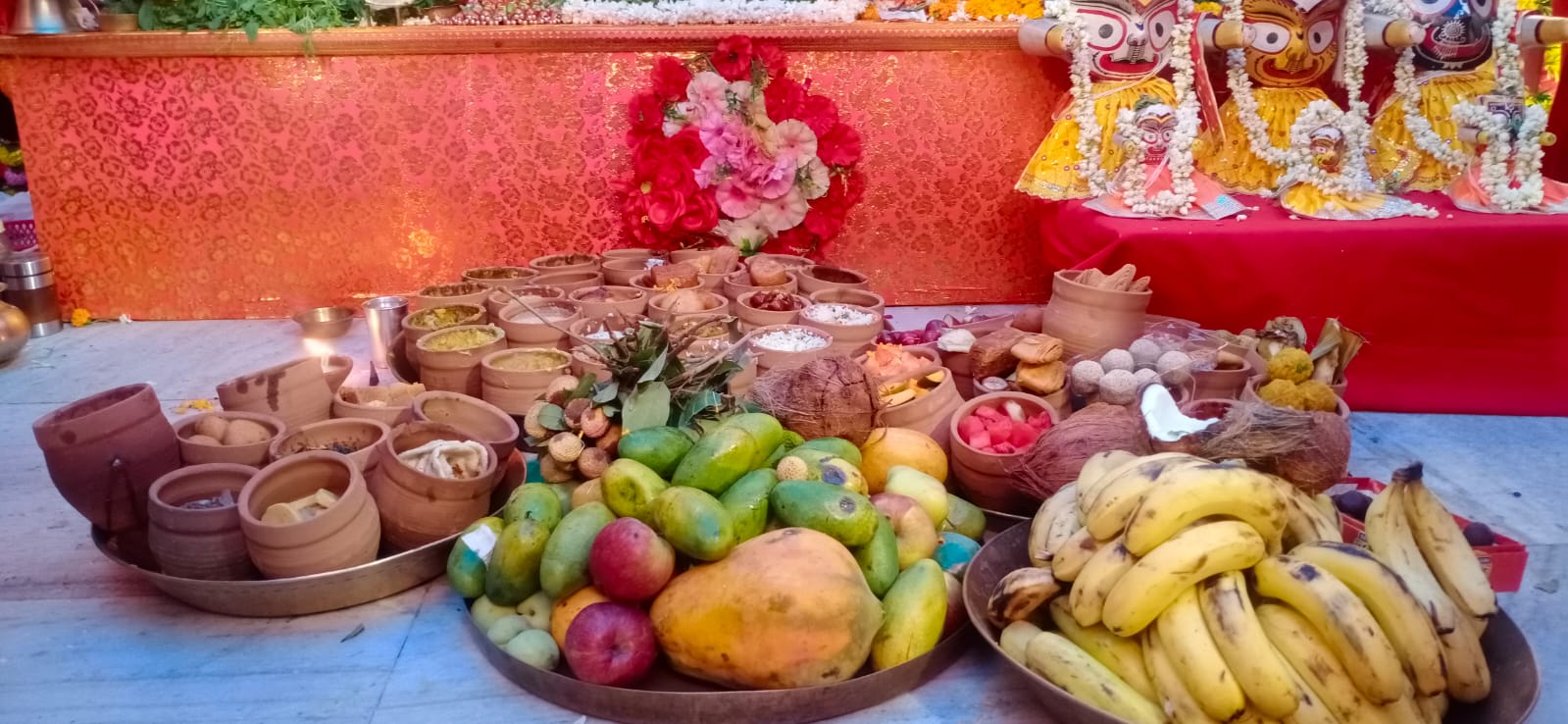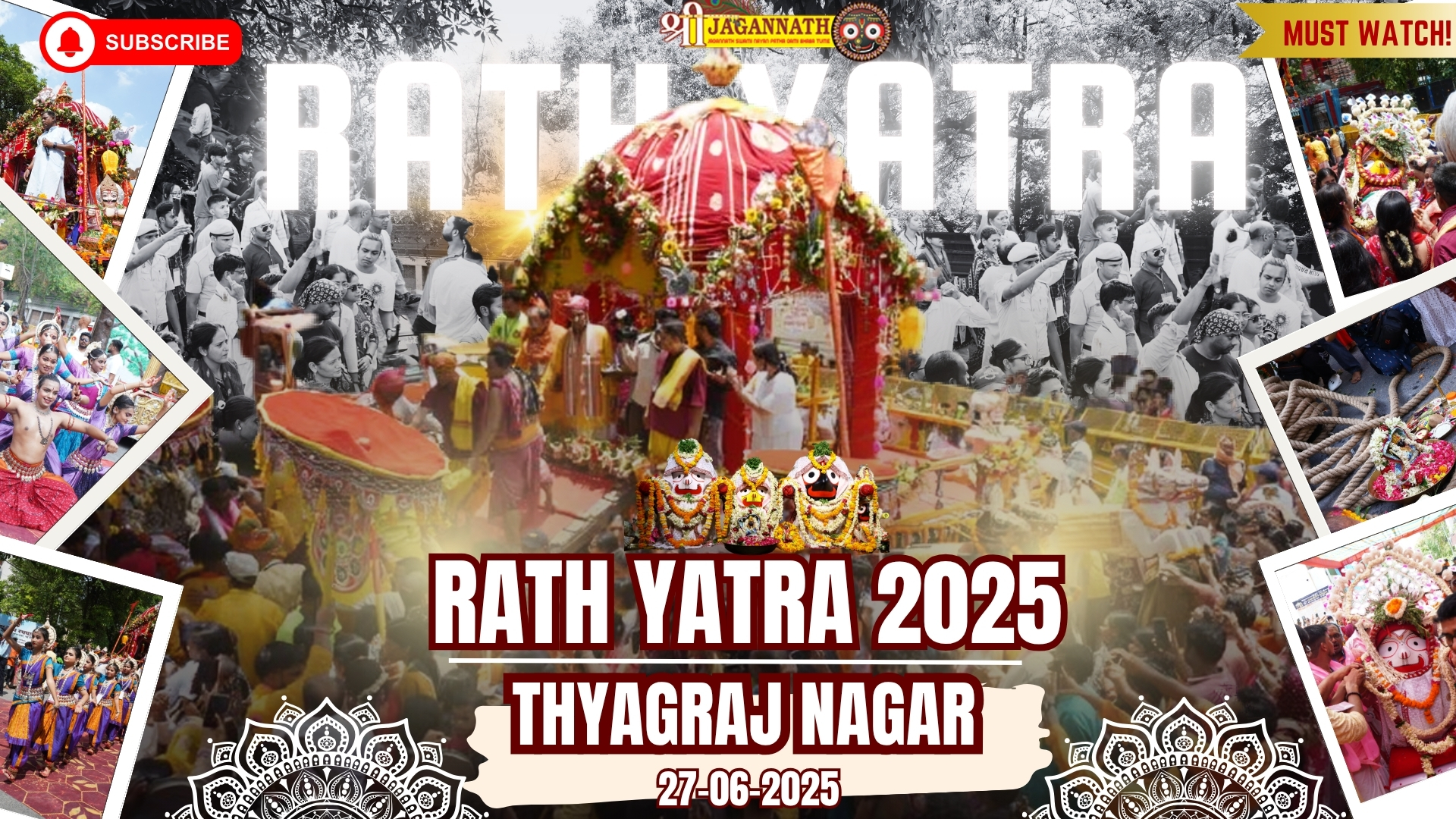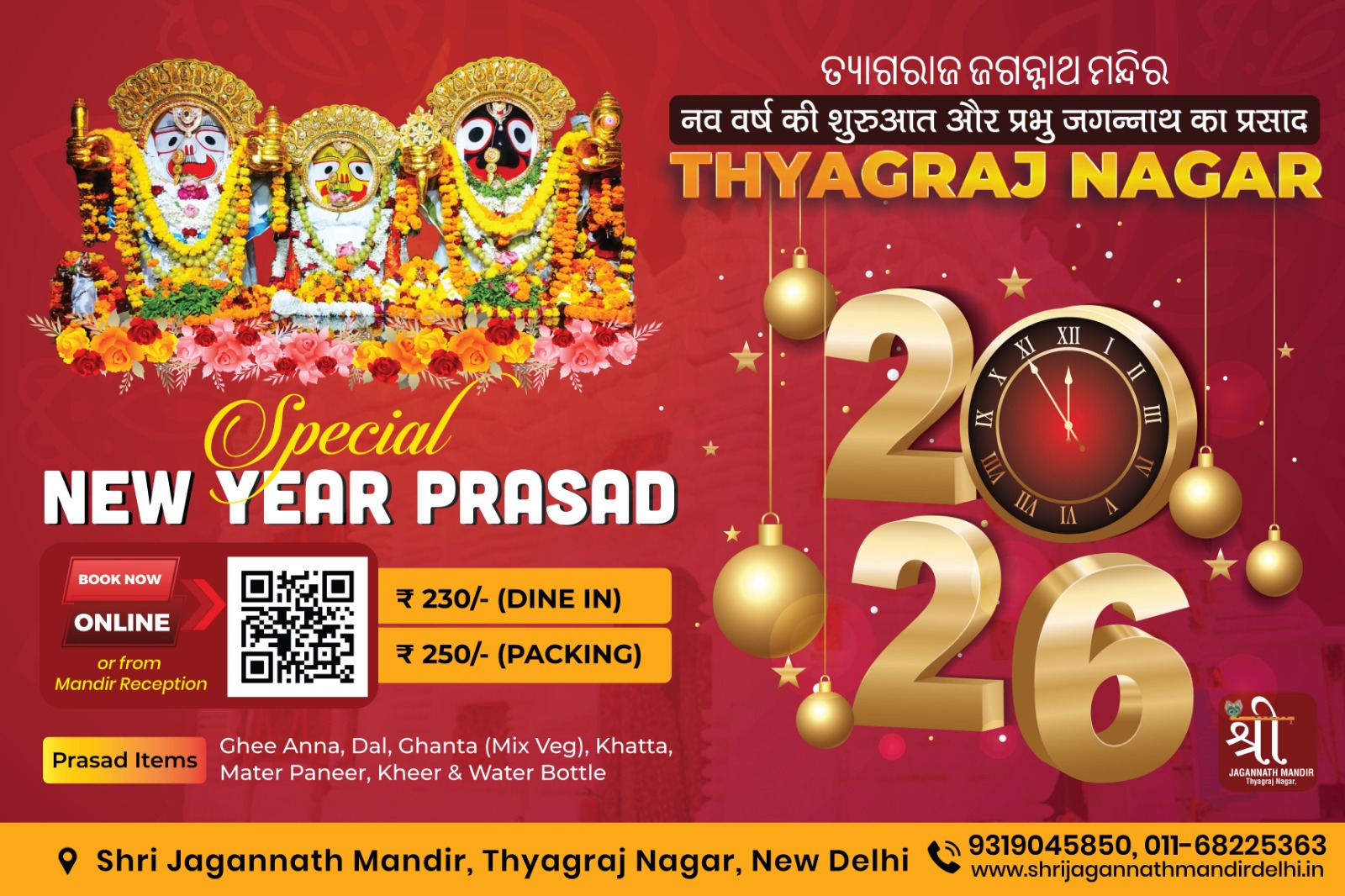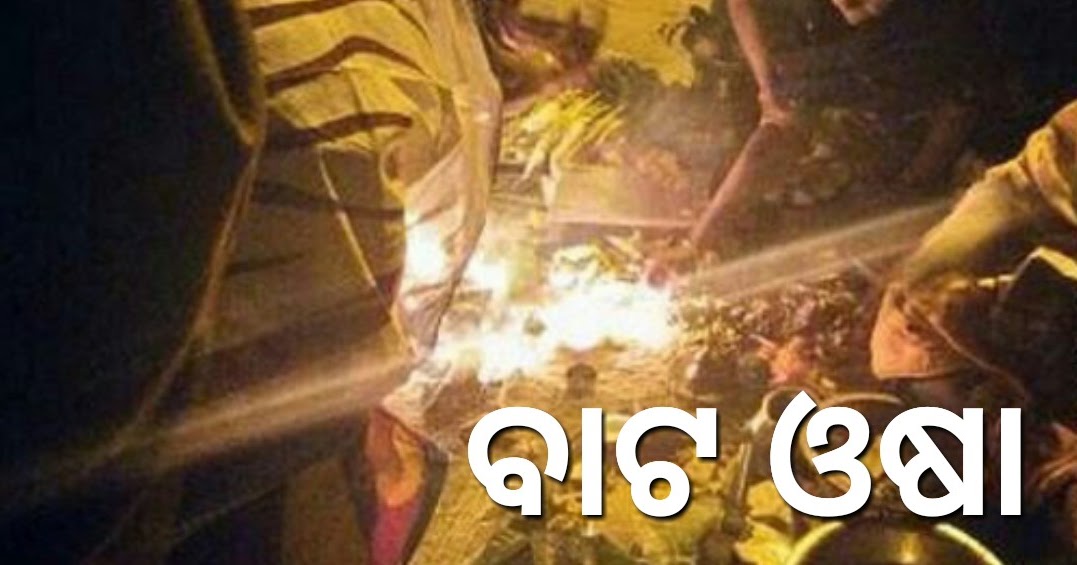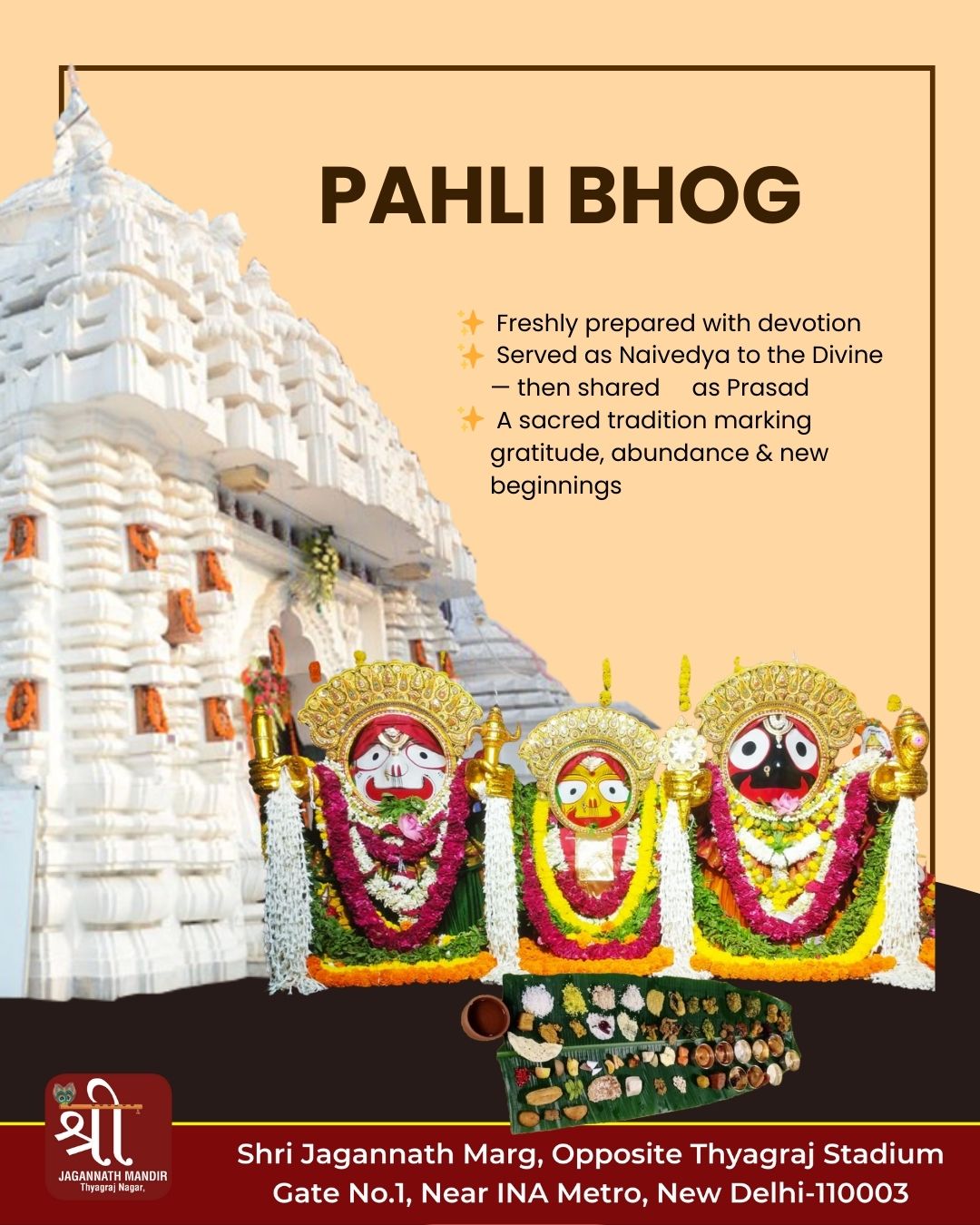Introduction
The 56 Bhog, also known as Chappan Bhog, refers to the 56 different types of food offerings made daily to Lord Jagannath at the Jagannath Temple in Puri, Odisha. This elaborate ritual of offering food is an integral part of the temple’s traditions and reflects the deep devotion and culinary heritage of the region. The offerings are prepared in the temple’s unique kitchen and are considered highly sacred and auspicious.
Historical and Mythological Significance
The tradition of 56 Bhog is deeply rooted in Hindu mythology and is believed to be associated with Lord Krishna, an incarnation of Lord Vishnu. According to legend, Lord Krishna, during his childhood, used to eat eight meals a day. After lifting the Govardhan Hill and protecting the residents of Vrindavan from torrential rains for seven days, he missed 56 meals (7 days x 8 meals). To compensate for these missed meals, devotees offer 56 Bhog to Lord Jagannath, an incarnation of Krishna, daily.
The Divine Offerings
The 56 Bhog is a sumptuous and diverse array of dishes, carefully prepared and offered to the deities. These offerings are categorized into various meals throughout the day, from early morning to late evening. Here’s a look at some of the key components of the 56 Bhog:
- Gopal Ballabh Bhog
- This is the first offering of the day, usually consisting of fruits, sweets, and milk-based items, served early in the morning.
- Sakala Dhupa
- The morning meal, which includes a variety of rice dishes, lentils, and vegetables.
- Madhyanha Dhupa
- The midday offering includes a more elaborate meal with multiple courses, including rice, dal, curries, and sweet dishes.
- Sandhya Dhupa
- The evening offering, which is lighter and may include snacks and sweets.
- Bada Singhara Bhog
- The final offering of the day, served late at night, includes milk, fruits, and light snacks.
Key Dishes in 56 Bhog
The 56 Bhog features a wide variety of dishes, showcasing the rich culinary heritage of Odisha. Some of the notable items include:
- Pakhala Bhata: Fermented rice with water, served with accompaniments like yogurt and green chilies.
- Dalma: A traditional dish made with lentils and vegetables.
- Khechudi: A rice and lentil preparation, similar to khichdi.
- Saga Bhaja: Stir-fried green leafy vegetables.
- Khatta: A tangy and sweet chutney made with fruits or vegetables.
- Pitha: Traditional cakes or pancakes made from rice flour and coconut.
- Khaja: A sweet pastry made from wheat flour and sugar.
- Malpua: A sweet pancake made from flour, milk, and sugar.
Preparation and Distribution
The offerings are prepared in the temple’s unique kitchen, known as the Rosaghara. This kitchen is reputed to be one of the largest in the world, capable of cooking for thousands of devotees daily. The cooking is done in earthen pots over wood-fired stoves, following traditional methods and strict ritualistic guidelines.
After the food is offered to the deities, it is distributed as Mahaprasad, the sacred food, to the devotees. Consuming Mahaprasad is considered highly auspicious and is believed to bestow blessings and good fortune.
Conclusion
The tradition of 56 Bhog at the Jagannath Temple is a beautiful blend of devotion, culture, and culinary excellence. It represents the deep-seated faith and reverence of the devotees towards Lord Jagannath. The elaborate preparation and the diverse array of dishes make 56 Bhog a unique and integral part of the temple’s daily rituals, showcasing the rich cultural and spiritual heritage of Odisha.
Book 56 Bhog Prasad Online
 Experience the Divine 56 Bhog!
Experience the Divine 56 Bhog! 
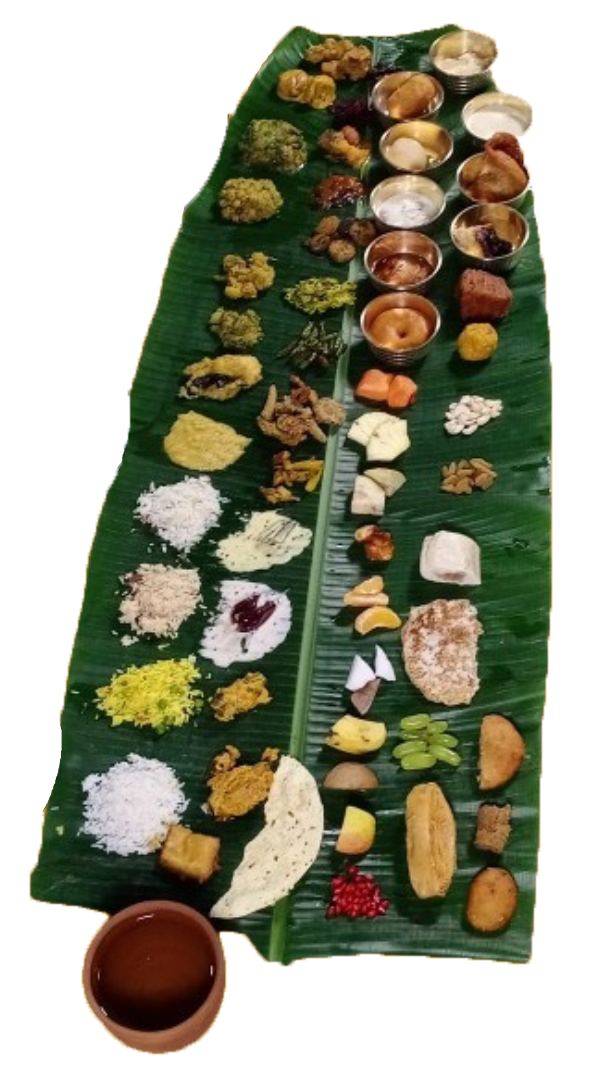
Request Form
FAQs
What is the significance of the 56 Bhog?
It represents a tradition of offering 56 items to honor and nourish Lord Jagannath.How many times a day is the Bhog offered?
Bhog is typically offered multiple times daily during various temple rituals.Is the preparation method unique?
Yes, the food is prepared traditionally, following specific recipes passed down over generations.Who prepares the 56 Bhog?
Dedicated temple cooks, called Suaras, prepare the offerings with utmost devotion.Can devotees receive 56 Bhog as prasad?
Yes, after offering, portions are distributed to devotees as sacred prasad.What ingredients are used?
Ingredients vary but commonly include rice, lentils, ghee, spices, and vegetables, all sourced fresh.Are there any restrictions on the preparation?
The food is cooked without onion or garlic and follows strict vegetarian principles.Why is 56 Bhog specifically offered?
It symbolizes Lord Jagannath’s 56 meals, based on lore suggesting he requires food every 45 minutes.Does each item in the 56 Bhog have significance?
Yes, each item holds spiritual and nutritional symbolism, contributing to a balanced offering.How can one participate in the 56 Bhog ritual?
Devotees may contribute ingredients or donations and receive blessings from the ritual.
For more information, you can visit the page here.


